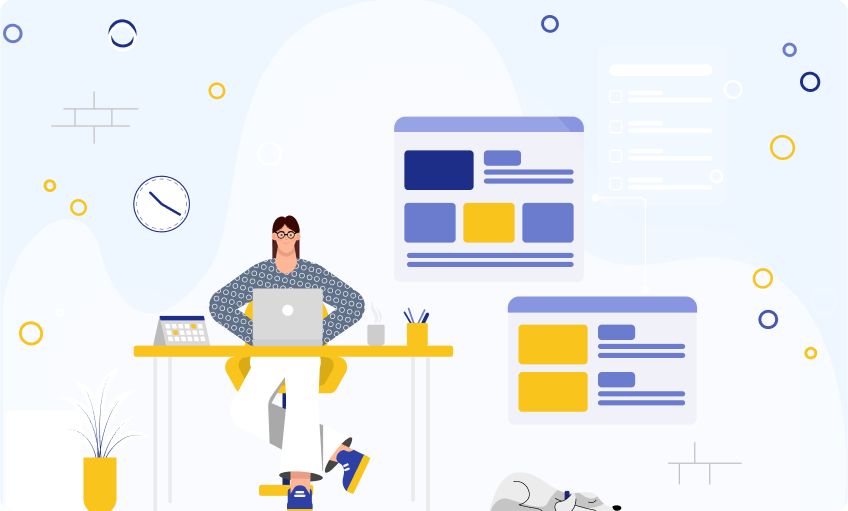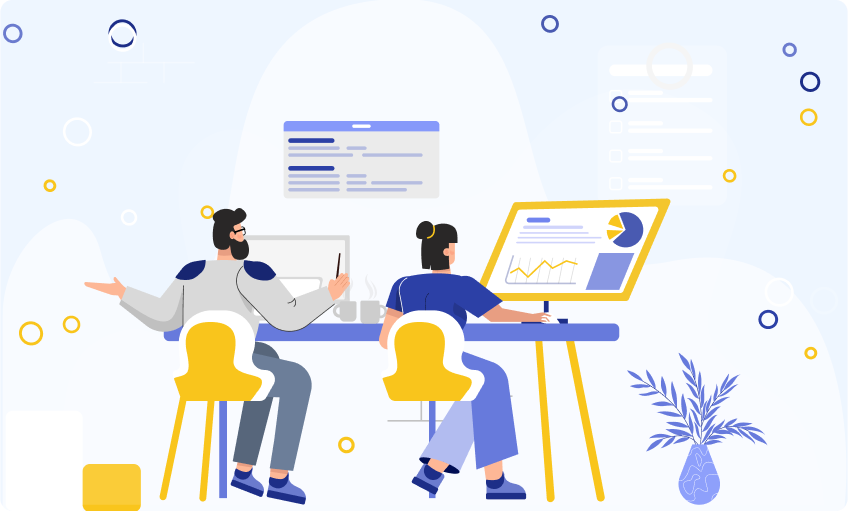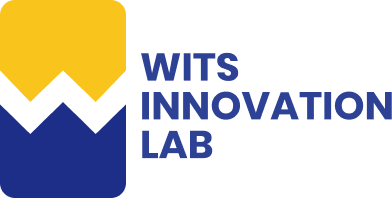In recent years, AI has gone from a futuristic idea into a daily reality. AI is not just in smart devices or virtual assistants — it’s a core part of designing, testing, and improving user experiences. We will explore how AI makes UX smarter, more responsive, and easier for designers to manage while keeping users engaged and understood.
1. Generating and Optimizing UI Designs in Seconds

Designing a user interface (UI) was laborious, beginning with sketches and drafts and ending with the final layout. But now, with AI-powered tools like UX Pilot in Figma, this process is sped up by generating high-quality UI designs in seconds from simple text prompts. Say a designer might type, 'A fitness app with tracking and social features,' the AI can generate a layout with the right things. It's not about saving time; it's about providing designers with a creative starting point from which to work. With AI-generated designs, designers can skip the repetitive setup and get straight to the details, like colors, shapes, and positioning.
Why It Matters:
Freeing designers to be creative rather than logistics, AI-powered UI design tools. The result? A faster process, a polished product, and more time to ensure that the design resonates with users.
Tip: Uizard generates layouts from simple descriptions, simplifying the initial design process with tools like this. Picture a designer in need of a quick mockup for a travel app. Uizard instantly creates a polished UI draft by entering a prompt such as "A travel planner with maps and itinerary sections." It gives the designer a solid basis for getting started, bypassing the blank canvas phase.
Why It Matters:
Freeing designers to be creative rather than logistics, AI-powered UI design tools. The result? A faster process, a polished product, and more time to ensure that the design resonates with users.
Tip: Uizard generates layouts from simple descriptions, simplifying the initial design process with tools like this. Picture a designer in need of a quick mockup for a travel app. Uizard instantly creates a polished UI draft by entering a prompt such as "A travel planner with maps and itinerary sections." It gives the designer a solid basis for getting started, bypassing the blank canvas phase.
2. Rapid Wireframe Creation: A Flash from Ideas to Structure
The blueprint of UX design is wireframing, which means a rough outline of what the app or site will look like. Traditionally, designers spend hours arranging boxes and sections to sketch out the user flow. This is changed by AI tools like UX Pilot Wireframer, which creates a wireframe from a few sentences immediately. For example, if a designer writes down, "An online bookstore with filters for genres and authors," if the AI is given this command, it can create a wireframe with search bars and filters and a product display area added. This early structure helps designers envision and refine user journeys before they get into more detailed design work.
Why It Matters:
With AI-generated wireframes, there's a great head start, which cuts down the time and effort needed for the framework. It gives designers an initial structure to adjust to make it faster to iterate and get ideas out to life.
Tip: Here, Wireframing tools like Whimsical use AI to help you quickly transform your idea into a visual wireframe. In this case, a designer tasked with creating an online recipe app might type in "a searchable database… user ratings… ingredient lists." Then, whimsical drafts a wireframe with these components to allow designers to get into refining user journeys and layout details.
Why It Matters:
With AI-generated wireframes, there's a great head start, which cuts down the time and effort needed for the framework. It gives designers an initial structure to adjust to make it faster to iterate and get ideas out to life.
Tip: Here, Wireframing tools like Whimsical use AI to help you quickly transform your idea into a visual wireframe. In this case, a designer tasked with creating an online recipe app might type in "a searchable database… user ratings… ingredient lists." Then, whimsical drafts a wireframe with these components to allow designers to get into refining user journeys and layout details.
3. Heatmaps: Predicting User Attention
It is important to know where users are looking at a page to optimize a layout. Using AI, predictive heatmaps allow designers to predict which parts of a design are the most engaging and which are ignored. This feedback puts important elements like buttons, menus, or images in places where they will be noticed. For instance, a heatmap could tell us that users spend most of their time in the upper right part, which also steers designers to place the most important elements. This type of insight is key to driving maximum engagement and keeping the users from missing key information.
Why It's a Game-Changer:
Heatmaps can be used by designers to make data-driven decisions to improve the layout and flow of a design. They can predict where users will look, streamline the design to make interactions smoother, and build a layout that naturally leads users through the experience.
Tip: Predictive AI tools like Crazy Egg give you heat maps that tell where users are most likely to click, hover, or scroll. Let's say a website for a coffee shop chain wants to highlight its rewards program. With Crazy Egg's heatmap, we know which high-attention areas the rewards button will be most visible to users, increasing clicks and engagement.
Why It's a Game-Changer:
Heatmaps can be used by designers to make data-driven decisions to improve the layout and flow of a design. They can predict where users will look, streamline the design to make interactions smoother, and build a layout that naturally leads users through the experience.
Tip: Predictive AI tools like Crazy Egg give you heat maps that tell where users are most likely to click, hover, or scroll. Let's say a website for a coffee shop chain wants to highlight its rewards program. With Crazy Egg's heatmap, we know which high-attention areas the rewards button will be most visible to users, increasing clicks and engagement.
4. User Flow Mapping and Sitemaps
In the world of UX design, user flows, and sitemaps are critical to ensuring that users are guided through an app or a website. These flows must be hand-created, especially for complex designs with multiple pathways. By providing simple instructions, AI-driven tools make this easier by generating user flows. With an input like "Shopping app with cart, checkout, and wishlist features," AI can automate a flowchart, which shows a user's journey, such as browsing and purchasing. Then, designers can adjust accordingly to provide a logical, user-friendly experience.
What's the Benefit?
By allowing the users to guide the flow of the design structure, these AI-generated flows make it clear that the users can find what they need. This means that designers spend less time on structure and more time creating a better experience and user journeys that are smoother and more intuitive.
Tip: In UX design, creating a seamless user flow is important, and tools like FlowMap help with that by creating flowcharts based on a few input prompts. FlowMap will also help you create a visual flow from selecting a product to checking out so you can see each step. This tool allows designers to identify possible user journey bottlenecks even at the initial stages.
What's the Benefit?
By allowing the users to guide the flow of the design structure, these AI-generated flows make it clear that the users can find what they need. This means that designers spend less time on structure and more time creating a better experience and user journeys that are smoother and more intuitive.
Tip: In UX design, creating a seamless user flow is important, and tools like FlowMap help with that by creating flowcharts based on a few input prompts. FlowMap will also help you create a visual flow from selecting a product to checking out so you can see each step. This tool allows designers to identify possible user journey bottlenecks even at the initial stages.
5. Targeted Design through User Persona Generation
Half the battle in UX design is knowing the audience. User personas are different types of users designers use to concentrate on designing experiences that answer their needs. With AI tools like ChatGPT, designers can whip up personas from a few keywords or descriptions, such as 'young professionals in tech.' With this, the AI can give you detailed persona insights, including preferences, potential pain points, and the features you'd like to see. While these personas may need refinement, they provide designers with a great starting point that fits with their target users.
Why It Matters:
With AI-generated personas, designers can start with a clear audience in mind from the get-go. It aligns with user needs, reducing the probability of a user feeling like they're working against the product making it intuitive and tailored while enhancing the chances they will enjoy the experience.
Tip: With HubSpot's Make My Persona tool, you can create detailed personas based on certain user inputs like age, interests, and goals. This tool can be used by a designer to build profiles of young professionals or retirees if it is a financial planning app. The personas give the design team insights into each user type's needs and how to tailor the experience.
Why It Matters:
With AI-generated personas, designers can start with a clear audience in mind from the get-go. It aligns with user needs, reducing the probability of a user feeling like they're working against the product making it intuitive and tailored while enhancing the chances they will enjoy the experience.
Tip: With HubSpot's Make My Persona tool, you can create detailed personas based on certain user inputs like age, interests, and goals. This tool can be used by a designer to build profiles of young professionals or retirees if it is a financial planning app. The personas give the design team insights into each user type's needs and how to tailor the experience.
6. Easy Competitive Analysis

In UX design, competitive analysis is a must, but comparing features across products is time-consuming. In short, this improves by streamlining it using AI tools that quickly analyze features and point out the differences or similarities. For example, ChatGPT can see lists of competitor features and overlaps and propose unique additions. It also lets designers know what they can do to innovate and what users are willing to accept based on what competitors are providing. AI can also quickly perform a SWOT (Strengths, Weaknesses, Opportunities, Threats) analysis and help teams better grasp market position.
How It Helps
Competitor analysis using the power of AI gives you quick and comprehensive insights to guide your product development. The more we understand the competitive landscape, the more we can align our product to the user's expectations while providing something unique.
Tip: Owler makes keeping track of competitors a little easier. Owler compiles competitor data (features and market positioning) and saves designers hours of manual research. For instance, a designer on a ride-sharing app could scan other apps and identify which features they provide and where opportunities exist to add a unique design element or service.
How It Helps
Competitor analysis using the power of AI gives you quick and comprehensive insights to guide your product development. The more we understand the competitive landscape, the more we can align our product to the user's expectations while providing something unique.
Tip: Owler makes keeping track of competitors a little easier. Owler compiles competitor data (features and market positioning) and saves designers hours of manual research. For instance, a designer on a ride-sharing app could scan other apps and identify which features they provide and where opportunities exist to add a unique design element or service.
7. User Insights Powered by AI Interview Assistance
User interviews are gold mines, but they produce a lot of data. Otter.ai will transcribe your interviews, and ChatGPT will analyze transcripts and pull out trends, common concerns, or even specific phrases. The information is easy to filter to find recurring themes or direct quotes that help to identify user needs and preferences. It saves time for sorting through notes, and designers can concentrate on executing the feedback.
What's the Advantage?
That analyzes interview data more easily using AI and allows designers to respond to feedback quickly. By keeping the improvement process streamlined, user insights drive the final design, making a product closer to user needs.
Tip: Your users' feedback is invaluable, and tools like Otter.ai help transcribe interviews and help pick up common themes. When a designer interviews users for an e-commerce app, Otter.ai transcribes, and highlights usually mentioned concerns, such as confusing checkout processes. Grouping this feedback in this organized form enables the designer to concentrate on problem areas and target improvements.
What's the Advantage?
That analyzes interview data more easily using AI and allows designers to respond to feedback quickly. By keeping the improvement process streamlined, user insights drive the final design, making a product closer to user needs.
Tip: Your users' feedback is invaluable, and tools like Otter.ai help transcribe interviews and help pick up common themes. When a designer interviews users for an e-commerce app, Otter.ai transcribes, and highlights usually mentioned concerns, such as confusing checkout processes. Grouping this feedback in this organized form enables the designer to concentrate on problem areas and target improvements.
8. Trend and Industry Research
In UX design, you need to stay informed about industry trends, but it can be overwhelming to gather all that information. This is done through AI, which gives us quick summaries and insights. ChatGPT can be used by designers to ask for updates on specific trends, including any mobile app design innovations or the latest and greatest UI elements. By analyzing trends, AI can also tell you what is trending and what is not, and designers can get an early start on incorporating them.
Why It's Useful
With real-time insights from AI designers, you can stay relevant and proactive. However, this knowledge of trends helps their designs remain fresh and in line with user's expectations, making the product more competitive.
Tip: Statista is a research tool that gives quick access to relevant data and trends. If we are designing a streaming platform, we can look into Statista and see how many people prefer mobile streaming. By looking at this trend data, designers can align their UX decisions with what's new in the industry, like prioritizing the mobile-first layout.
Why It's Useful
With real-time insights from AI designers, you can stay relevant and proactive. However, this knowledge of trends helps their designs remain fresh and in line with user's expectations, making the product more competitive.
Tip: Statista is a research tool that gives quick access to relevant data and trends. If we are designing a streaming platform, we can look into Statista and see how many people prefer mobile streaming. By looking at this trend data, designers can align their UX decisions with what's new in the industry, like prioritizing the mobile-first layout.
9. Making Usability Testing Streamlined with AI
However, usability testing is important to ensure designs are usable, and it's hard to do with incomplete designs. Then, AI takes over by helping test participants navigate simulated experiences and providing feedback on what does and doesn't work. If the design isn't fully built, AI can analyze test results to identify common user difficulties, helping designers understand how to make adjustments.
How It Helps
Usability testing with AI power can discover possible problems early in the design. Resolving these pain points before launch allows designers to create a smoother experience that decreases user frustration and increases user satisfaction.
Tip: AI simplifies testing by using tools like Maze to give insights before a final product is ready. Maze enables a designer to test a travel booking app, walking users through key tasks (booking a flight) and recording where they get stuck. The AI then runs the results through the AI, allowing the designer to see which parts of the design require adjustment.
How It Helps
Usability testing with AI power can discover possible problems early in the design. Resolving these pain points before launch allows designers to create a smoother experience that decreases user frustration and increases user satisfaction.
Tip: AI simplifies testing by using tools like Maze to give insights before a final product is ready. Maze enables a designer to test a travel booking app, walking users through key tasks (booking a flight) and recording where they get stuck. The AI then runs the results through the AI, allowing the designer to see which parts of the design require adjustment.
10. Understanding AI-Driven Elements for Users
As AI finds its way into products, users need to know where and what AI is doing. Labeling AI-generated insights, recommendations, and automated responses gives users information about what is to come. As you do this, you provide the necessary transparency that builds trust with users and makes them more comfortable with the technology. Tagging a suggestion as 'AI-generated' can keep users more aware of how the suggestion was produced — this can increase transparency and security.
What's the Benefit?
By clearly labeling AI-driven elements, confusion, and user trust are reduced. The transparency improves the whole experience, allowing users to feel comfortable with the product.
Tip: IBM Watson offers tools that highlight any AI-driven elements within a product. A healthcare app that provides AI-powered symptom checkers, like IBM Watson, can label the recommendations as "AI-Powered" to let users know which results are an algorithm. The transparency also makes users feel more confident using AI-driven features.
What's the Benefit?
By clearly labeling AI-driven elements, confusion, and user trust are reduced. The transparency improves the whole experience, allowing users to feel comfortable with the product.
Tip: IBM Watson offers tools that highlight any AI-driven elements within a product. A healthcare app that provides AI-powered symptom checkers, like IBM Watson, can label the recommendations as "AI-Powered" to let users know which results are an algorithm. The transparency also makes users feel more confident using AI-driven features.
Conclusion
While AI in UX design doesn't mean automating tasks, it does mean removing the burden of those tasks from designers so that they may concentrate on the creativity, empathy, and the human touch that makes experiences feel real. When AI takes over the data analysis, producing the first layouts and giving insights, designers can focus on making natural and personal products. As these new technologies are introduced into the UX mix, the combination of AI and human input creates a more intuitive, responsive, and fun future.

Written by / Author
Manasi Maheshwari
Found this useful? Share With
Top blogs
Most Read Blogs
Wits Innovation Lab is where creativity and innovation flourish. We provide the tools you need to come up with innovative solutions for today's businesses, big or small.
© 2026 Wits Innovation Lab, All rights reserved
Crafted in-house by WIL’s talented minds

